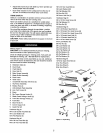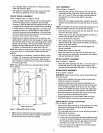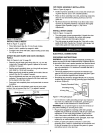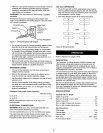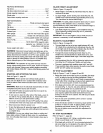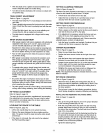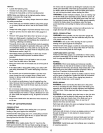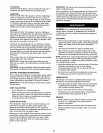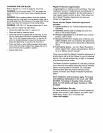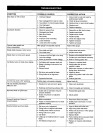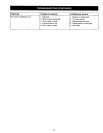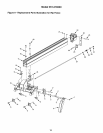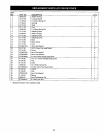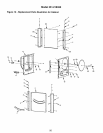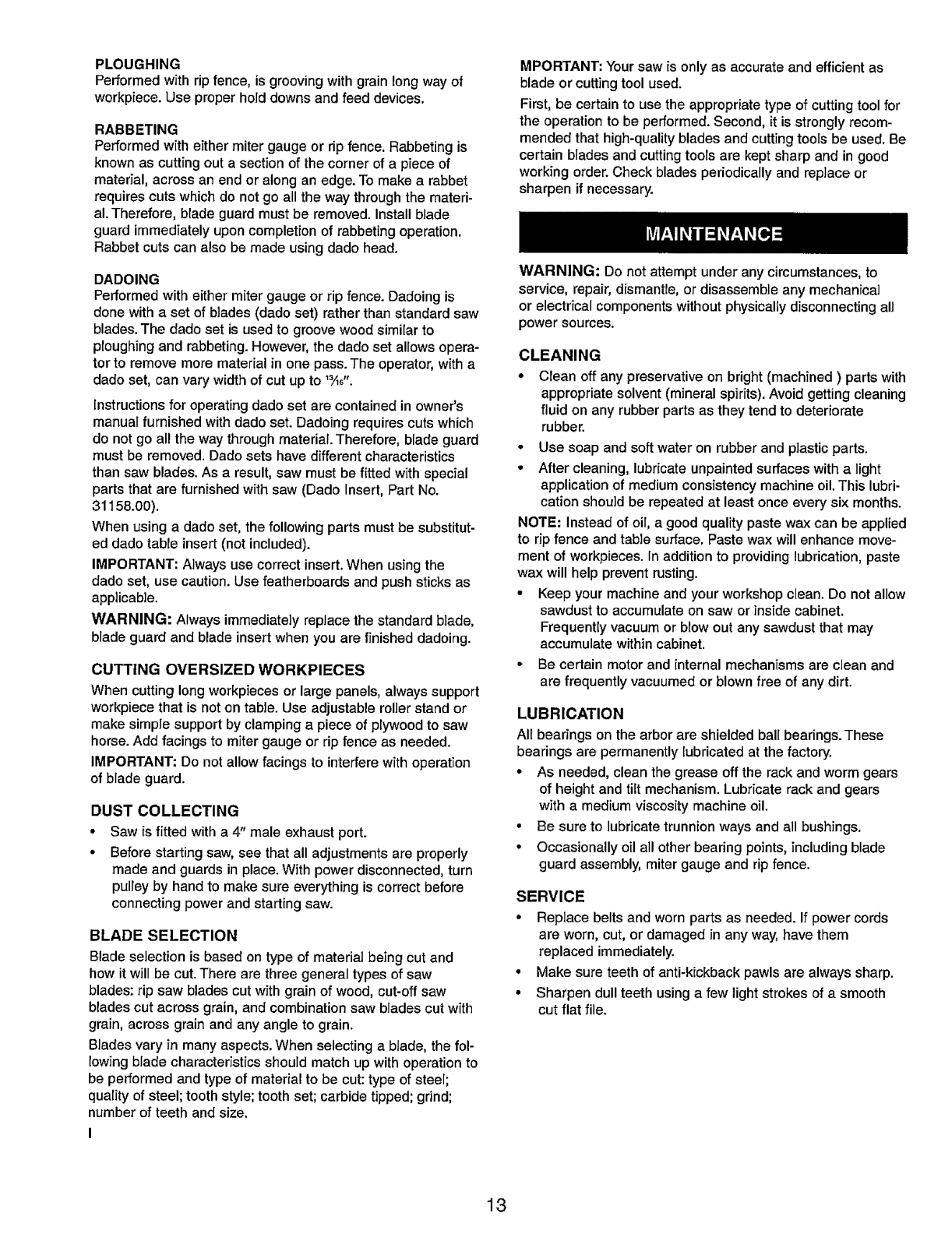
PLOUGHING
Performed with rip fence, is grooving with grain long way of
workpiece. Use proper hold downs and feed devices.
RABBETING
Performed with either miter gauge or rip fence. Rabbeting is
known as cutting out a section of the corner of a piece of
material, across an end or along an edge. To make a rabbet
requires cuts which do not go all the way through the materi-
al. Therefore, blade guard must be removed. Install blade
guard immediately upon completion of rabbeting operation.
Rabbet cuts can also be made using dado head.
DADOING
Performed with either miter gauge or rip fence. Dadoing is
done with a set of blades (dado set) rather than standard saw
blades. The dado set is used to groove wood similar to
ploughing and rabbeting. However, the dado set allows opera-
tor to remove more material in one pass. The operator, with a
dado set, can vary width of cut up to _6".
Instructions for operating dado set are contained in owner's
manual furnished with dado set. Dadoing requires cuts which
do not go all the way through material. Therefore, blade guard
must be removed. Dado sets have different characteristics
than saw blades. As a result, saw must be fitted with special
parts that are furnished with saw (Dado Insert, Part No.
31158.OO).
When using a dado set, the following parts must be substitut-
ed dado table insert (not included).
IMPORTANT: Always use correct insert. When using the
dado set, use caution. Use featherboards and push sticks as
applicable.
WARNING: Always immediately replace the standard blade,
blade guard and blade insert when you are finished dadoing.
CUTTING OVERSIZED WORKPIECES
When cutting long workpieces or large panels, always support
workpiece that is not on table. Use adjustable roller stand or
make simple support by clamping a piece of plywood to saw
horse. Add facings to miter gauge or rip fence as needed.
IMPORTANT: Do not allow facings to interfere with operation
of blade guard.
DUST COLLECTING
o
o
Saw is fitted with a 4" male exhaust port.
Before starting saw, see that all adjustments are properly
made and guards in place. With power disconnected, turn
pulley by hand to make sure everything is correct before
connecting power and starting saw.
BLADE SELECTION
Blade selection is based on type of material being cut and
how it will be cut. There are three general types of saw
blades: rip saw blades cut with grain of wood, cut-off saw
blades cut across grain, and combination saw blades cut with
grain, across grain and any angle to grain.
Blades vary in many aspects. When selecting a blade, the fo!-
lowing blade characteristics should match up with operation to
be performed and type of material to be cut: type of steel;
quality of steel; tooth style; tooth set; carbide tipped; grind;
number of teeth and size.
MPORTANT: Your saw is only as accurate and efficient as
blade or cutting tool used.
First, be certain to use the appropriate type of cutting tool for
the operation to be performed. Second, it is strongly recom-
mended that high-quality blades and cutting tools be used. Be
certain blades and cutting tools are kept sharp and in good
working order. Check blades periodically and replace or
sharpen if necessary.
WARNING: Do not attempt under any circumstances, to
service, repair, dismantle, or disassemble any mechanical
or electrical components without physically disconnecting all
power sources.
CLEANING
Clean off any preservative on bright (machined) parts with
appropriate solvent (mineral spirits). Avoid getting cleaning
fluid on any rubber parts as they tend to deteriorate
rubber.
• Use soap and soft water on rubber and plastic parts.
• After cleaning, lubricate unpainted surfaces with a light
application of medium consistency machine oil. This lubri-
cation should be repeated at least once every six months.
NOTE: Instead of oil, a good quality paste wax can be applied
to rip fence and table surface. Paste wax will enhance move-
ment of workpieces. In addition to providing lubrication, paste
wax will help prevent rusting.
• Keep your machine and your workshop clean. Do not allow
sawdust to accumulate on saw or inside cabinet.
Frequently vacuum or blow out any sawdust that may
accumulate within cabinet.
• Be certain motor and internal mechanisms are clean and
are frequently vacuumed or blown free of any dirt.
LUBRICATION
All bearingsonthe arborare shieldedbali bearings. These
bearings are permanentlylubricated at the factory.
° As needed, cleanthegreaseoffthe rackand wormgears
of height and tiltmechanism.Lubricaterackand gears
witha mediumviscositymachine oil.
• Be sure to lubricatetrunnionways andall bushings.
• Occasionally oil all otherbearingpoints, including blade
guardassembly,mitergaugeand rip fence.
SERVICE
* Replace beltsand wornpartsas needed. If powercords
are worn,cut,or damagedin anyway,have them
replaced immediately.
° Make sure teeth of anti-kickbackpawls are alwayssharp.
. Sharpen dull teethusinga few lightstrokes of a smooth
cut flatfile.
13



